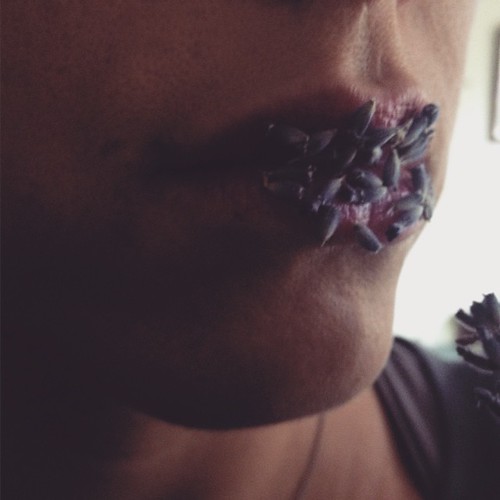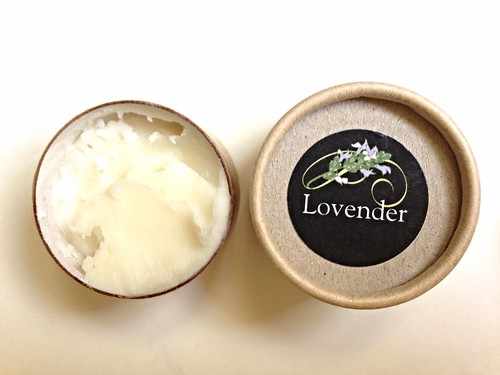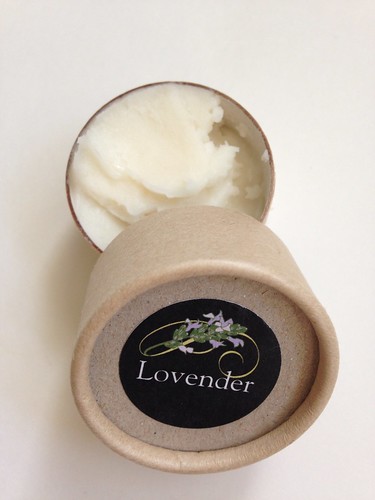Lavender Beauty

LAVENDER IN SKINCARE AND COSMETICS
Lavender oil has skin-regenerative properties that make it especially appealing for use in cosmetics and body products. It not only cleanses the skin, protects it from bacteria, fungi and microbes - but also helps to prevent scaring, which makes it ideal for acne-prone skin.
It's important to note that most skin conditions are an expression of deeper things that are going on in the organism's life... Stress of daily life included, but also tension (read: deeper, unresolved emotional issues - most of which are unconscious or subconscious). It's interesting to note that often people who have problems such as eczema or acne refer to their skin when experiencing a bad flare-up episode as "angry skin". So if at all possible - taking a mental note of what might be going on in our lives emotionally (and not just what we ate, drank or did to our skin directly) when we first experienced a breakout, and finding ways to express those emotions - might help to resole the issue, and make the skin problems also go away.
Essential oils work not only on the physical, cellular and molecular level in our body (lavender, for example, reducing tension and promoting peaceful, calm emotions). So incorporating these in your self-care works holistically, also supporting you emotionally and assisting the nervous system, not just the skin it touches. When you're applying a lavender-scented mask, bathing in lavender, or hydrating your face with lavender floral water - you're also helping your mind to be more at peace with whatever life might have thrown at you that day.
Here are a few ideas for how to incorporate lavender and its products into your skin care and beauty regime:
Cleansing:
Lavender, Honey & Yoghurt Mask
This is a gentle, non-drying mask for acne-prone skin, as the antibiotic components in both lavender and honey help to kill off the bacteria that tents to intensify the severity of the breakouts. The friendly Lactobacillus acidophilus bacteria in yoghurt will also help kick those breakouts off the face of the earth, while also adding nutrients to your skin from the milk's fat. Use full milk, thick Greek style yoghurt for best results.
2 Tbs full-fat plain Greek yoghurt, with no additives (avoid those with thickeners such as cornstarch, pectin, etc.)
1 tsp raw honey
1 tsp crushed lavender buds
1 drop lavender essential oil
Apply to your face and leave on for 5 minutes. Pat gently with a warm, wet cloth to remove the mask. Follow with a toner and a moisturizer. You can enjoy this mask 1-2 times a week.
Lavender Hydrosol
Finding a good Lavender Hydrosols are far and few. Some are not made from true lavender but from Lavandin (L. latifolia), so investigate before you place your order. I had a lavender hydrosol many years ago that I suspect was one of those. It had more camphoreous and coumarin type of scent, and just did not feel vibrant enough. Also, there are two types of hydrofoils: those which are by-products of the distillation process, and only contain the water left off after the oil has been collected. And then there are hydrosols that were made exactly for that purpose, and have all the oils within them still. The latter have a fuller spectrum of the plant's therapeutic and beautifying benefits.
Important note: Hydrosols are a perishable product, and no matter which type of hydrosol is in question, it should be used up within 6 months, and preferably kept in the refrigerator (especially if you're living in a warm climate).
I've used up all that lovely hydrosol as a facial toner. I find that floral water are a wonderful way to hydrate the skin, either on their own or to layer facial oil overtop. The added moisture and gentle dosage of healing and beautifying properties in the floral water nourish the skin; while the facial oil seals that moisture and adds nutrient of its own. I usually do that only in the evening (I'm quite low maintenance when it comes to skin care; but if your skin needs more nourishment - a morning spritz of hydrosol will start your day with a reviving yet gentle scent. You can either pat it dry with a soft towel, or just let it air dry. Layer with a lighter moisturizer, cream or facial serum if your skin is particularly dry or has other problems.
You can also combine lavender hydrosol with other hydrosols for a synergistic effect. For example, in her book "The Aromatherapy Companion", Victoria H. Edwards recommends blending equal parts of lavender, chamomile and artemisia arborescens hydrosols for sensitive skin; for acne equal parts hydrosols of llavender, thyme and orange flower; and for oily skin a blend of equal parts lavender, lemon verbena and artemisia hydrosols. These can be either sprayed on the face or applied with a cotton pad. Another interesting preparation by is of half a cucumber ground in a blender with 1/2 oz lavender hydrosol, 1 oz witch hazel and 2 drops rosemary oil, strained in a coffee filter and kept refrigerated. This is a perishable blend, which I would think needs to be used up within 2 weeks.
Lavender & Vinegar Astringent Toner *
Preparing your own lavender toner is easy, affordable and effective. Natural apple cider vinegar has many benefits especially for oil or problematic skin (i.e.: blackheads or acne prone).
1 oz lavender floral water or orange floral water
1 oz spring water or filtered tap water
2 oz apple cider vinegar
2 drops lavender oil
1 drop neroli
Note: If you can't find lavender hydrosol, you may substitute a lavender infusion for it. Steep 1 tsp of dried lavender buds (Lavandula angustifolia) in boiling water for 5 minutes. Strain and bring to room temperature. Add the other ingredients. Let sit in a covered jar for 24 hours. Filter through an unbleached paper coffee filter, and rebottle in a sterilized airtight bottle.
Apply with a cotton ball or cotton pad to tone your face, and follow with a moisturizer or customized face oil.
Individual breakout can be "zapped" by dipping a q-tip in neat lavender oil and dabbing gently each zit, making sure they stay intact and allow them to heal on their oil. Lavender oil will help speed up this process.
Lavender & Frankincense Face Oil (for oily to normal skin) **
15 mL (or 1 Tbs) non-comedogenic (non-clogging) carrier oil such as Sunflower, Argan, Rose hip or Hemp seed oils - or a combination of those
1 capsule Vitamin E
5 drops Lavender oil
1 drop Frankincense oil
2 drops Carrot Seed oil
Lip Care:
Lavender makes an excellent additive to lip balms, and helps to improve the condition of dry, chapped lips.
Here's a delicious recipe with added yumminess and nutrients from cocoa butter and honey.
4 Tbs. almond oil
2.5 Tbs. coconut oil
2 Tbs. beeswax
1.5 Tbs. cocoa butter
1 tsp. honey
1 capsule vitamin E
Up to 40 drops flavouring essential oil, i.e.: 20 drops of lavender and 20 drops of geranium essential oils; or 20 drops of lavender and 20 drops of peppermint.
Melt the beeswax, cocoa butter and coconut oil in bain marie. add the almond oil and honey. Add the essential oils and pour into little jars or tubes.
Hair Care:
Lavender is renown for its anti-dandruff benefits. While most commercial anti-dandruff shampoos only make the dandruff stick to your scalp, and create a dependency on their product - making your own home remedies is going to at least reduce the symptoms, if not resolve the problem once and for all.
Dandruff, like so many other unpleasant skin conditions are more than likely the result of stress and tension (read: unresolved emotional issues), and possibly some elements that are lacking in the diet - including vitamin D if you're living in a place where natural sunlight is scarce, or other essential fatty acids (for example: including more flaxseeds in your diet might help).
Adding lavender (and other oils that work with it synergistically to eliminate dandruff) to your shampoo, scalp treatment oils or vinegar rinse. Aside from lavender, Valerie Anne Worwood (The Compelete Book of Essential Oils & Aromatherapy) recommends the following essential oils to treat dandrfuff: rosemary, lemon, lime, birch, basil, thyme, allspice, cypress, eucalyptus peppermint, sage and carrot seed. Evening primrose, borage and jojoba oils are good base oils to support that, from you which you can blend an oil and massage into the scalp and leave over night.
Anti-Dandruff Shampoo Substitute
4oz "Soap stew" or unscented liquid Castile soap. **
18 drops Rosemary
10 drops Lavender
8 drops Sage
Anti-Dandruff Vinegar Rinse
1 Tbs unfiltered and unpasteurized apple cider vinegar
5 drops Lavender oil
5 drops Thyme ct. linalool
3 drops Sage
5 drops Rosemary
Rinse your hair after shampooing withAnti-Dandruff Overnight Treatment
Dip your fingertips into a mixture of 15 drops each evening primrose and jojoba oils, to which 3 drops of cypress and 5 drops of lavender have been added. Massage into the scalp before retiring.
Recently, lavender has been under scrutiny by self-proclaimed expert Paula Begoun on the so-called "Cosmetic Dictionary". Incidentally, her website is dedicated to selling her own line of unscented skincare, so she's clearly not a fragrance lover. Now I'm all for keeping my skincare as pure as could be, but why punish yourself with a scentless world if some of the oils are actually greatly beneficial for the skin?
If you share her fanatics of anti-fragrance, knock yourself out. However, if you have a more pragmatic approach, read Robert Tisserand's response, which I find not only reasonable but also reassuring. Even the entirely anti-fragrance lobbyists Skin Deep seem to find lavender harmless.
* Adapted from Valerie Anne Worwood's The Compelete Book of Essential Oils & Aromatherapy, p. 124.
** Adapted from Valerie Anne Worwood's The Compelete Book of Essential Oils & Aromatherapy, pp. 130-131. This chapter has a thorough series of treatments for acne.
*** Use a liquid Castile soap or "soap stew" from boiling castile soap flakes OR soapwort in water.
Adapted from Valerie Anne Worwood's The Compelete Book of Essential Oils & Aromatherapy, pp. 164-165



